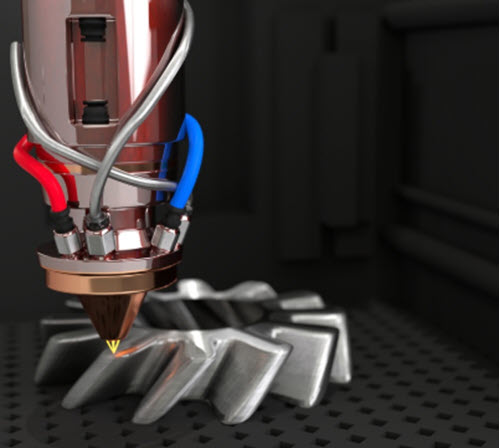
Image courtesy of Pixabay
When you live and work in an industry, it can be easy to lose track of what’s happening all around you. While it might be obvious to the average consumer that cupcakes are having a moment, a seasoned baker may not recognize their popularity. They’ve always sold a lot of cupcakes, after all, because their market (birthday parties, retirement celebrations, office parties) has always demanded a lot of cupcakes.
Metal additives just might be the high-tech cupcakes of the moment. Additive manufacturing has been happening on some level for a long time, but recent research suggests that it may be emerging as a mainstream production process at a rate that surprises even the savviest of industry insiders.
The Past, Present, and Future of Additive Manufacturing

Image courtesy of Pixabay
Developed in the 1980s, additive manufacturing relies on the addition of layer after layer, until a part is finished. While the materials and machines for this process used can vary, metal additive manufacturing is really just 3D printing. It can be a slower process, but the result is products that are well-suited for harsh environments — think medicine, aerospace, and more.
Surprising Growth
One recent study, conducted by Subcon, indicates that approximately 25 percent of respondents already use additive manufacturing in production components. Around 85 percent plan to do so within the five years following the study. These numbers represent huge growth within the industry: in 2016, only 21 percent of respondents used additive manufacturing and only 35 percent thought they would try it within five years. That’s quite a turnaround, in just a few years!
It turns out that humans, as a rule, are really bad at predicting the future. In the case of metal additive manufacturing, however, it’s understandable to be surprised: going from model and tooling shops to factory floors is quite the leap, especially in such a short time frame. As metal additives come of age, however, the growth promises to be nearly limitless, especially as companies like GE and Stryker continue pioneering development in their respective industries.
Perfecting the Process

Image courtesy of Pixabay
Of course, metal additive manufacturing isn’t without some potential drawbacks. The cost can be quite high, and it’s not always justified, although it is continually getting lower. Additionally, the material can be inconsistent, which makes exact replication difficult at times. Strict regulations and inspections require close attention and valuable resources.
Intellectual property is also a hot topic as metal additive manufacturing expands: who, exactly, owns the digital version of a part that has been replaced? Metal additive manufacture still has some kinks to work out of the system (just like every new technology preceding it did), but its remarkable usefulness and versatility means that it has a bright future.
Fusion 360: Bringing the Benefits of Early Adoption without the Hassle
For the early adopters of a new process, the learning curve can be steep — it might feel like there aren’t many resources out there to help you deal with the changing needs of your industry. Fortunately, Fusion 360 is here to help. With a development process that boasts a high level of agility, and architecture that excels at creating custom projects, this design tool is perfect for metal additive manufacturing.
By offering cost and timeline predictions early in the process, Fusion 360 helps to mitigate potential problems regarding cost and time down the road. It is also great at keeping a paper trail for past, present, and future projects — a future that will surely include metal additive manufacturing.
Try Fusion 360 for free today!
